This could be another tale of pottery on a shoestring. Even in Switzerland, the fabled land of milk
and money. There's plenty of both seemingly, its
just that the latter is harder to come by. You
either have it or you don't. If you don't then the
prospect of constructing a large kiln in a foreign
country could possibly be a daunting if not impossible exercise. However, after two and a half years
of travelling and working in Europe, being totally
unconcerned about clay and pots and kilns and firings, it came to a point where naturally I had to
pick up the potting reins again. Pick them up certainly, but only on an all or nothing basis. The all
being the kind of working and living situation with
the kiln I'd always dreamed about since dicovering
clay for the first time. The nothing being a permanent change of direction, away from pots. From
the heart, the second option could never have
happened out of circumstances it could well have
come to pass. When making criteria eventually
dictate only one direction, in this case working a
very large anagama buried deep in the ground, it
is easy to see that the options are limited. Even
so when one owns not his own walls (which have
to be in the right place for such purposes), or his
own land, or has access to anything more than
minimal financial resources.
A big wood kiln requires a permanent space, it
is not something you can easily take on holiday. It
also needs enough room for at least a years wood
supply, with planning permission usually a burdensome necessity. The man is therefore limited to
owning his own property, with land, somewhere well
out of town. This either calls for rich relatives or
several Hans Copers to sell. The only other alternative is walking a tightrope by relying on the
unceasing good will of a landowner, and finding someone suitable to put up with such a ridiculous
escapade is not an easy task. To get all these prerequisites on one plate is an almost impossible
occurence. Even if it does become reality, there is
then the problem of obtaining firebrick, and that
is invariably a very expensive commodity.
Fortunately, my affair with making pots
has always been concerned with the roots. Those
simple beginnings and fundamentals of the pot
making process that have seemingly and virtually
disapeared as a direct result of modern trend. Roots
speak of simplicity. Simplicity rarely costs a lot,
especially when mother luck trots merrily alongside.
There are a few potters interested in real fire, even
fewer who really understand it, the majority preferring the lure and folly of techno innovation and
contemporary modality. Thus objects are constantly
produced from clay that may well be technically and
intellectually brilliant but sadly lack little heartfelt
aesthetic or loyalty to the origins of the craft.
As a result, my pot making development has
been inextricably bound up with kiln development.
Not in a technological manner, but in a way that
I can only describe as something that results from
a primaeval instinct and well considered perception.
I envy that caveman for his feelings when he first
discovered that fire bakes clay. Imagine the elation.
I think I touch on it when I am firing. I certainly
feel like jumping around and making unintelligible
grunts. Its borne out of a feeling of understanding
yet at the same time not understanding of being
in awe. The more I strive to capture the process
of nature in the way I make and fire, the closer
I get to the roots.
The kiln that now stands on a previously usable
patch of Emmental dairy farming land, realises the
dream of a decade. Its conception and construction
born out of a mixture of pure good fortune and
plain hard graft. The beginnings of it all originate
with a much used and abused hole in the ground at
Farnham ten years ago, a period still close to my
heart and already written about at length in Pottery
Quarterly Vol. 14 No 54. It was at a time when I
had pottery heroes. Their early influences gradually
Imellowed over the years to a point where I can
say my only influence now comes from my materials
my kiln, pots from previous firing, and sometimes,
though goodness knows why, the perpetual and
melancholic clonk of Swiss cow bells. I still have
the heroes, though most of them have passed on.
The legacy of Hamada, Leach and Cardew, and
treasured memories of those I knew such as Paul
Barron and Henry Hammond, these alone are
enough encouragement for me to retain a dogged
allegiance to traditional methods.
So it was in autumn of 1988 that I happened to be
present in the middle of a field with a Swiss farmer
who I'd never even met before, confronted with the
possibility of achieving the almost impossible. He
waved one hand haphazardly at the rising slope
before us, said I could build here somewhere, and
went back to milking his cows. There I stood,
surrounded by rolling hills, pine forests and laidback
Swiss farmsteds with my knees quaking in utter disbelief, as though I'd suddenly got the whole world
in my hands. The ten year dream was about to
become reality, I'd experienced the elation of that
caveman, and I was searching for a shovel.
The Mule is a blend of well proven principles.
The donkey and the horse both have their attributes
but the mule, a beast of draught and burden has all
of them put together. It is of course undeservedly
noted for being stubborn, but probably only as a
result of being mistreated by its owner. Thus like
all my previous kilns, this one was also given a
name, and as a conglomeration of ideas I'd been
working on since Farnham, The Mule fitted well.
Its predecessor, Bacchus, was a prototype, a
pseudo anagama (if there exists such a thing) from
which I learnt even more about firing technique and
kiln behaviour.
My previous workshop, a disused farm on the
outskirts of Northampton, was a bleak place at the
best of times, but as a pottery and a place for
firing it served its purpose well. I lived and worked
next to Bacchus in disused pig sheds for eighteen
months and became labelled eccentric by the press
because of it. However, since that first hole in the
ground at Farnham, I've only ever been interested
in wood fired single chamber cross draught kilns.
A case of choosing the ride and sticking with it.
If you die by the side of the road in the process
so be it, but the choice is one of a devotee and an
inbuilt mania to see it through. The cross draught
wood kiln boasts two main characteristics not so
inherent in other kilns. Firstly, dependent on the
length, there is a decreasing temperature gradient
from firebox to flue, and secondly, like it or not
virtually all the pots end up with a front and back
irrespective of how they were made. The latter is
unavoidable, as a direct result of flame and ash on
one side and the flue on the other. I still don't like
to see my pots the wrong way round however subtle
or beautiful their backs are. I periodically go
through the house turning them round after unknowing visitors look at them and put them down
back to front.
The former characteristic of decreasing temperature gradient I gave a lot of consideration. Up to
a point you can go with the flow and place lower
firing glazes at the back. An admirable solution and
to work with rather than against that flow is very
true to the natural processes on tap. However, I
found myself relying more and more on the same
vitreous slip and high firing shinos, and less on
lower firing ash glazes. A side stoke half way up
would be the obvious answer, or several, dependent
on the length of the chamber. Principles used by
our ancestors for centuries, of course. Nevertheless
the inherent problem with the climbing cross-draught kiln is that the chimney naturally tends to
suck the heat out of the back part of the kiln
faster than its being fed in at the front. Close the
damper to counteract that and the kiln reduces and
fails to gain any further temperature rise. Evidently
necessary was some sort of back pressure.
In designing Bacchus the rest was relatively
easy. A Bourry firebox was a foregone conclusion
as i know it well. If it is built sufficiently large it
will fire anything to whatever temperature you want
with no fuss, providing of course the hole the other
end of the kiln is big enough too. I wanted the
floor of the chamber higher than the top of the
firebox to induce positive pressure and I wanted the
floor of the chamber to rise towards the flue. So
I really needed a hillside but I had none. Just an
empty pig shed. Not to be outdone, I built the
equivalent of a hillside out of concrete blocks and
rubble and perched the chamber on top of that
instead. This would have left the base of the
chimney three feet above ground level with only
five before it exited the pig shed. Flames out of
the stack can be great fun especially at night with
a camera, but also have a habit of creating an
unecessary and disturbing commotion that any potter
in his right mind would do well to avoid. How to
get the back pressure I required with a long enough
chimney in so little space? The answer was, as
usual, a logical one. I built a double skinned
chimney that incorporated a 'flue' from kiln floor
to ground level and then back upwards again as a
chimney. This configuration gave an extra eight feet
of flame flow and wonderful back pressure, decreasing the temperature gradient within the chamber
by about fifty degrees. Thus side stoking to raise
the rear part of the kiln to the required temperature became a relatively short and trouble free
exercise. In building the stepped floor, I hit upon
the idea of stepping the arch too, so the height of
the chamber at the back was the same as at the
front. Being free standing with sprung arches, the
whole structure required a fair amount of ironwork,
something well within the capabilities of a hacksaw
and home welder. Ironwork to my mind however,
does not look right. It's just not sympathetic.
Bacchus, at about eighty cubic feet, was simply
not big enough. The most important thing was, that
as a major experiment it worked, and worked well
it did. It was capable of reaching 1300oC in fifteen
hours, but I always used to fire for about thirty six,
and twelve of those at top temperature. I also required precious little wood. I built it, fired several
times for nothing using demolition timber and then
pulled it down. Burning my bridges I left dear old
England with a dream of transposing Bacchus into
a real anagama sunk into the ground. At least twice
as big, with a chamber like half an egg, completely
self supporting, and fired for much, much longer.
Where, when and more importantly with what means
gave me moderate cause for concern.
South in the Valais, nudging the Alps is a giant
aluminium smelting works. Twice a year they have
to reline the furnaces, and the resultant rubble is
deposited in the forest. The biggest firebrick tip you
ever did see. It took six days of digging them out
sorting and then stacking on pallets before I had
enough. Fifteen tons of grubby, well blasted, but
high quality bricks, and I was black from head to
toe covered in a not too healthy mixture of sweat
and aluminium dust. While sitting in the sun on a
campsite, a rather drunk but accommodating Italian
lorry driver was bribed into delivering them for me.
The bricks worked out at £5 a ton, the lorry four
times as much, but, I was well pleased.
Planning permission for the Mule took three and
a half months. It went to five different Swiss
offices. Some Cantons do not even allow wood kilns
- a strange conception since most country dwellings
are heated with wood stoves all the year round.
I managed to get the shed up before the first snowfall, The farmer donated tree trunks for the main
supports and the rest was built from machinery
packing cases. I paid only for the roofing sheets,
and reluctantly at that. The first snow as good
as buried the whole lot, but inside I was happily
digging the hole.
The transition from inches to centimetres posed
head problems at the outset, but I was in mainland
Europe and metric is more logical. Thus the Mule
was designed and constructed using a metre rule.
I do not build using any fixed parameters from
other sources. I use a little experience (this is the
eighth I've built) mingled with some common sense
and instinct. I certainly fire by instinct. Not many
people have it, maybe I'm lucky. There is such an
unaccountable myth associated with wood firing and
and a most absurd ineptitude to go with it. Lack
of instinct answers a lot, and so does lack of
gumption. Instinct is about feeling, conscious or
unconscious, and gumption is plain initiative. Can
you remember the last time you actually felt a
a gentle breeze on your face? Feeling the state
of a wood kiln during firing is not that different.
It is just a case of being aware. Designing and
building a wood kiln that functions well is simply
a logical understanding of the principles of combustion. Critical areas such as throat arch, bagwall
space, flue exit and chimney section should not be
built too tight. It's much better to be over generous
in these parts than to have a major problem later.
For instance an over large chimney section can be
controlled with dampers, if it is too small it has
to be rebuilt. The firebox volume in relation to
chamber volume is also important. It must be big
enough. The firebox of the Mule was designed
specifically for easy firing, high temperature and
a good ash deposit. The ashpit floor is half the
length of the chamber. The chamber floor rises in
six steps with a duct half way up to provide air for
side stoking. This air duct reaches the outside world
through clay drainage pipes on both sides of the kiln
and is an absolute must for efficent combustion in
this part of the chamber.
I found myself digging into a seam of gravel a
metre down, which with a finishing bed of sand,
provided a solid enough base for the floors and
foundations, and good drainage as well no doubt.
Digging the deep hole for the chimney was therefore
a trifle tiresome, but the advantage of having most
of it underground is that only a metre and a half
from a total of six protrudes above ground level.
This is of course environmentally friendly in terms
of landscape and possibly impressive in the planning
office, though which one I couldn't say.
The Mule was built in the order of firebox, kiln
floor, chimney and flue together and finally the
chamber. Finding scrap in Switzerland is not easy.
I might just as well have been looking for a needle
in a haystack. Nonetheless, I eventually secured all
those little extras I needed. The firebox was braced
with an iron frame to support the arches, and an
old but elegant cast iron bread oven door (with a
primary air slot no less) was given a new lease of
life as a Bourry firebox.door. I had always wanted
an ashpit with a door on a chain and pulley
balanced by a counterweight but previously I had never got around to it
This time I did. It works magnificently. Gary Wood, an ex-student of Mike
Dodd remarked that it was the only kiln he had
come across with a self flushing firebox. I fact the
whole firebox works so well he could be right.
Note should be made here regarding throat arch,
bagwall and bagwall space. I have come across many
kilns that have been built with the bagwall space
far too tight and almost without exception their
owners complain of the age old problem, getting
to temperature. Whatever the cause this can always
be answered without having to look far. There is
no myth. The throat arch is subject to the highest
temperatures in the kiln, and if the bagwall space
is too tight this leads to a wonderfully hot firebox
but a miserably cold chamber. Flame has a volume
and requires a certain amount of space to move,
if restricted in the bagwall area it will not heat the
chamber. Bacchus may look a little tight in this
point, but for the chamber size the bag wall was
just sufficient. For the mule with a 2.25 increase
in volume I enlarged the bagwall space comparatively. The bagwall equivalent is not only concave but
is inclined away from the firebox, i.e. the bagwall
space increases as it becomes chamber space. This
is both constructional and theoretical. Such a wall,
if built vertically and straight, will after several
firings bow towards the firebox simply because it
gets so hot. This naturally results in reduced bagwall space and irksome repair work. Flame volume
increases up to a point the further away from the
firebox it gets and then proportionately decreases
towards the chimney exit. The increasing bagwall
space permits easier combustion and the inclining
'bagwall' is sympathetic to the flamepath which by
its nature dislikes corners.
| Relative Proportions (cm.) | Bacchus | Mule |
| Packing space | 2.2m3 | 5m3 |
| Ashpit length | 148 | 215 |
| Chamber length | 283 | 400 |
| Max chamber width | 110 | 200 |
| Max chamber height | 90 | 140 |
| Firebox floor to chimney top | 290 | 440 |
| Bourry firebox length | 110 | 140 |
| Bagwall height | 75 | 104 |
I think the most enjoyable part of the whole exercise was building the
chamber. Everything else was finished, firebox, chimney, floor, flues
all it needed was the 'top'. With one long baton sprung from end to
end in a shallow arch I could visualize height to width proportions
and the height of the arch at any given point from front to back. I
then calculated, drew out and built seven U section formers from scrap
timber (fridge packing cases to be precise). With two of these positioned
at either end and the remaining five, one on the front of each step,
I could then form the main shape by pinning roofing batons over the
whole lot. It looked beautiful, just like an upturned
boat in its early stages of construction. It seemed a shame really to
cover it first in plastic, and then bit by bit with a single skin of
well laid firebrick. Half way up, on both sides, I set in two spy hole
ports and a side stoke port. these were made as conical cylinders, thrown
out of firebrick clay and and fired in a test kiln that I had also built
from scrap. Building the chamber took only two days, but after laying
bricks for weeks in sub zero temperatures knocking in the final one
was a relief. I can clearly remember impatiently burying the entire
construction under a great mound of earth and diving into the chamber
with a hammer to knock out the former. (Being buried the arch becomes
self supporting). After all the timber and rubble was thrown out of
the entrance I sat up the far end looking down and out of this great
oval dome, with its six round skylights, shaking with some kind of primitive
bewilderment, almost disbelief, at the beauty of it all. To think that
all this would soon be white hot hardly bore thinking about. It was
a long time before I came out again.
The finished arch was covered in a thick layer of high temperature clay
mixed with sand and sawdust. At a later date, the very obliging farmer
rebuilt his cowshed, and presented me with a trailer load of old and
very smelly red bricks. A layer of these was finished off with another
layer of clay dug from the nearby forest, again mixed with sand and
sawdust by foot. The chamber was now nearly half a metre thick at its
thinest point and well insulated. I threw side stoke and spy hole bungs
from firebrick clay, and made a pair of quick action iron doors rigged
up on pulley wheels for easy stoking. A little bit of luxury. The kiln
floor and bagwall were finished off with a mixture of 90% grog and and
10% clay. A bit more landscaping and it was finished.
The mule took four months to build and was constructed entirely from
scrap and recycled or found for nothing materials. It cost the equivalent
of £1000 including all transport and all kiln furniture. I collected
150 large silicon carbide kiln shelves and and 220 solid silicon carbide
props from the back door of the local porcelain factory. Second hand
of course and destined for the scrap heap, but it's amazing what you
can still get for a crate of beer. Conversely I might mention that I
heard of a 12 cu ft. gas kiln that cost the equivalent of £5000.
Later I came across a computerised electric kiln without a spyhole of
any sort. Ye gods, what is happening, I thought to myself! How can anyone
consider firing any kiln without being able to look inside it? It was
then that I realised how long the arm of decay has become. Real Pottery
could be called Real Kilns, Real Farming or Real Anything Else come
to that.
Most Swiss country houses are made of wood and the ones that get pulled
down to make way for more concrete provide a rich source of well seasoned
pine for firing. The Swiss have little interest in demolition timber,
its full of nails and difficult to stack neatly. For me its ideal and
usually free. Wood from the gradually dying forests is not really suitable,
it costs money and I have to keep it for at least a year before its
dry enough to use. I am now firing for two to two and a half days. It
gets longer every time. The lengthening of the firing cycle happening
because I rely more and more on the fire to decorate. The longer the
better. My making and decorating techniques have become very simple.
I use only one or two Shino glazes, but mostly just a vitreous slip,
nepheline syenite based. Sometimes nothing at all. Just clay. Just like
that caveman. The critical factor with such a long firing is of course
physical limitation. To fire for three days for instance requires a
certain amount of conditioning which can only happen over a long period
of time. I can never leave a firing even for a few hours in the hands
of someone else. On the few occasions I ever have done they've always
proved to be disasters, one way or another.
For firing and packing techniques refer to Pottery
Quarterly Vol. 14 No. 54. An approximate outline of my current firing
cycle is as follows:-
The first twelve hours - gradually to 400oC.
400oC to
The twelfth to the thirty sixth hour - 1300oC
pausing for an hours clean burning at 850oC, followed by
deliberate heavy reduction for the body from 920oC to 1000oC
over two hours.
Thirty sixth to the forty eighth hour or more - natural
cycle of oxidation and reduction brought about by stoking, the same
as for 1000oC to 1300oC. During this time temperature
rises to between 1300oC and 1350oC. Final two
hours clean burning followed by fast cool over one hour to 1000oC.
One may be tempted to ask why? To fill it takes about two and a half
months work, which means I only fire about three or four times a year.
The learning is inevitably slow with such a long period between one
firing and the next. Economically, both in terms of time and fuel it
works. It is clearly a long term project. With each firing comes a little
more understanding. The marriage of materials and flame together with
draught being a constant source of investigation. I don't think I could
work with anything less now a big kiln, holy fire and buzzards circling
overhead. Oh yes, that is the romantic side of it all the reality is
a kamikaze style existence, certainly with all the eggs in one basket
and a fine line separating success or failure. The pursuit of that rarely
attained harmony between clay, surface quality and fire is possibly
my major motivation. The end result to most is an intangible abstraction.
In a society hellbent on automation, it carries little validity or relevance,
except maybe to a handful of personalities who somehow, in the midst
of it all, retain some element of vision. Compromise has both a negative
and a positive terminal. To take the negative terminal and consciously
nurture it into the positive terminal of blend is one aspect of this
vision immediately applicable to the definition of Quality, if Quality
is ever definable. If a blend is designed to bring together the best
of the two, then surely this is a move towards that Quality. In a sense
I am looking to justify it all in one way or another, and Quality is
the only justification as all the others are seemingly created to satisfy
the ego. After all, it is a purely self indulgent passion. On the horizon
however rapidly approaches subtlety wearing the clothes of warmth, colour
and touch. The pot still has its place.
If that pot is a direct product of the personality, and the personality
is directly influenced by its environment, then logically the pot becomes
a straightforward breathing expression of the surroundings in which
it was created. To a greater part the constitution of these surroundings
consists of the purely sensual and physical, but not only. One cannot disassociate state of mind and mood. Many a strange looking pot
has disgraced the exhibition rostrum when really it should long have
been condemned to a life of shards. To have been born out of tune is
not the fault of the pot. Its life, or death, is simply the responsibility
of the maker.
John Maltby once said to me he couldn't understand how a potter could
be so deeply committed to such a mode of travel as a motorcycle. Boats
were much more in keeping. I didn't disagree, and I daresay if I made
in the manner of John Maltby I would disappear in a boat for the odd
afternoon as well. However, after three years longer in the saddle than
thirteen at the wheel, the two go hand in hand to such an extent that
one without the other would be inconceivable. If I owned a boat it would
represent romanticism, the motor cycle represents the reality. Switzerland
to England is a good days ride. Its much faster and less troublesome
in an aeroplane. Just like an electric kiln. To be in Zurich and then
in London a little over an hour later with not so much as a ruffled
hair is positively unreal, relatively speaking. Nevertheless, the total
experience and the end result is hollow. In actual fact devoid of any
intrinsic aestheticism or quality. The motorcycle is ridden out of pure
necessity and an inbuilt genetic disorder that states. must have wind
in my face while on the road. In any case Bernard Leach rode a motorbike
with Hamada in the sidecar.
I remember after I had finished all the heavy work going to the forest
early every morning and bringing back a small sapling, or some moss,
or a beautiful stone and setting it in its rightful place on and around
the kiln. It all somehow fitted together. A kind of pot pourri of values
which I am forever reconciling and kneading together into a harmonious
whole. The long fire encompasses an element as potentially creative
as the initial lump of clay and that by itself presents me with sufficient
horizons for a lifetime's work.
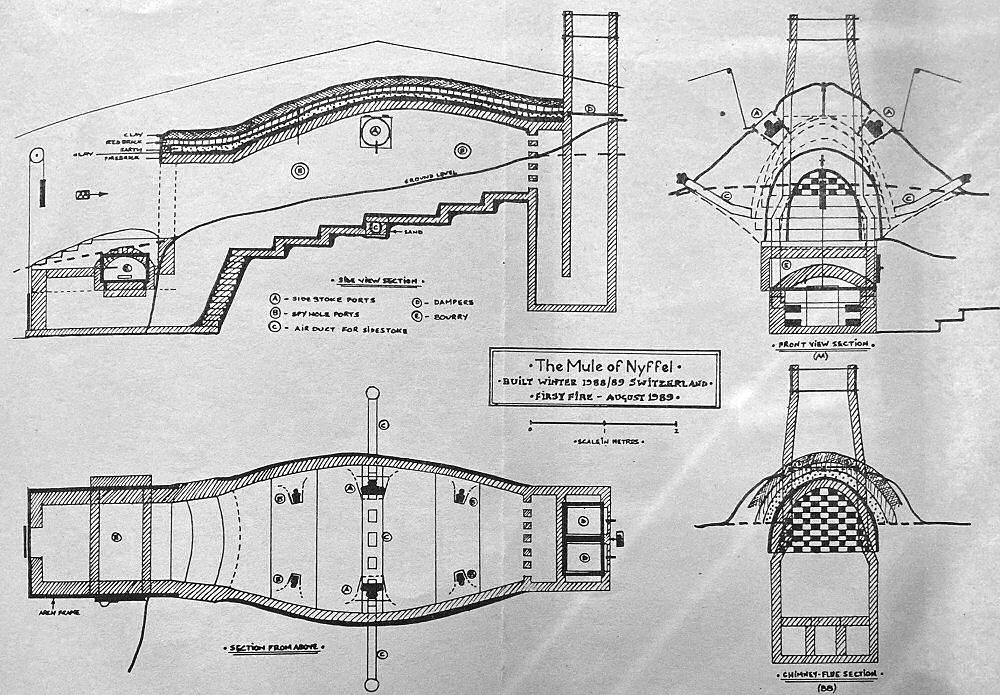
The Mule - Patrick Sargent's kiln design
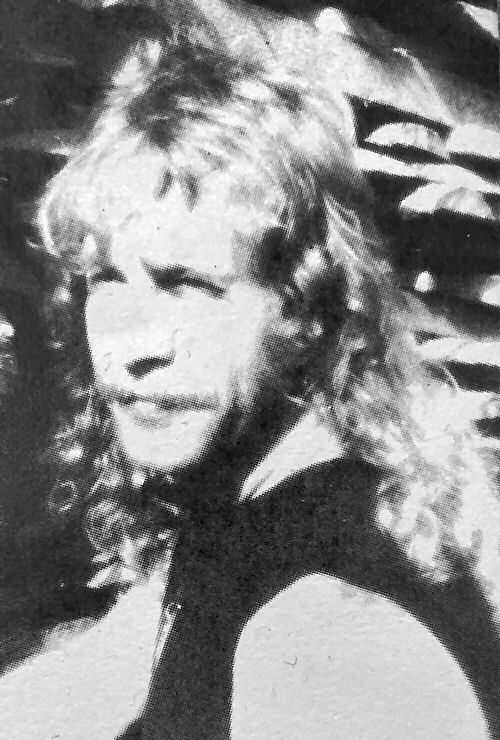
Patrick Sargent
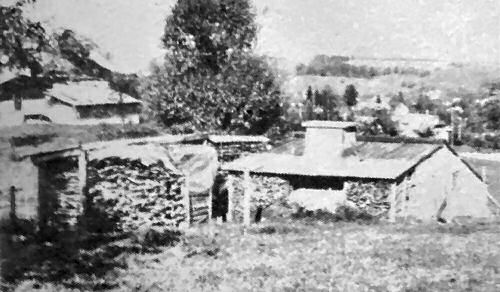
The Mule and Hutwil
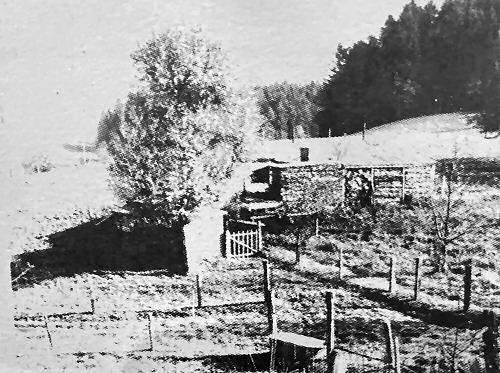
The Mule from the farm
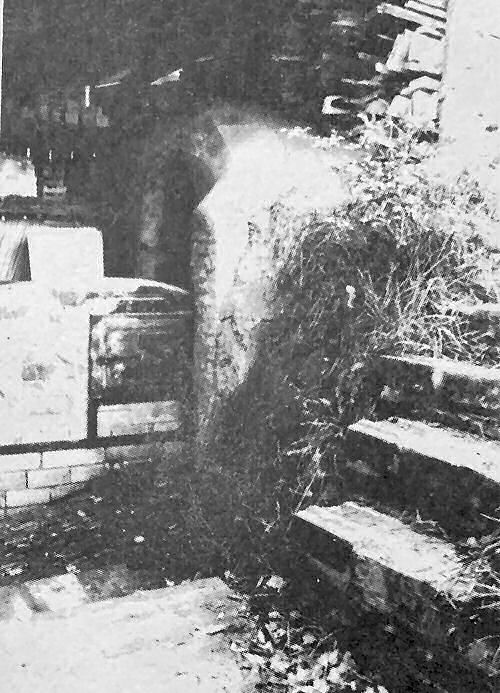
The Mule from outside
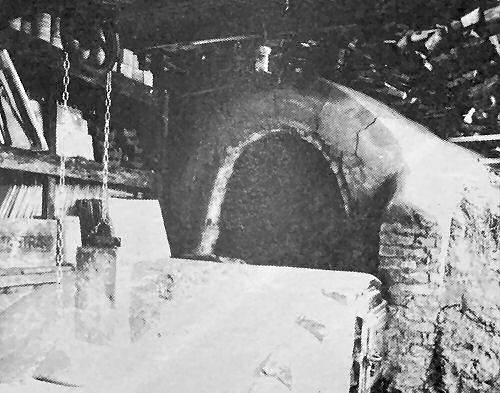
Chamber entrance
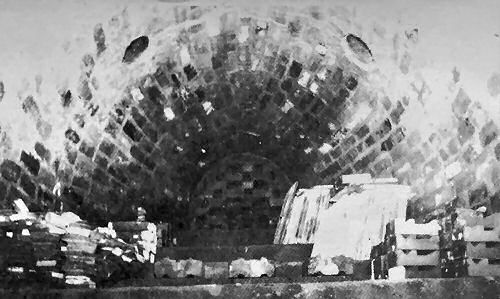
Inside the chamber
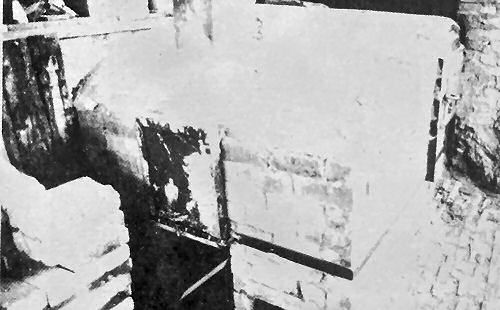
Fire Box
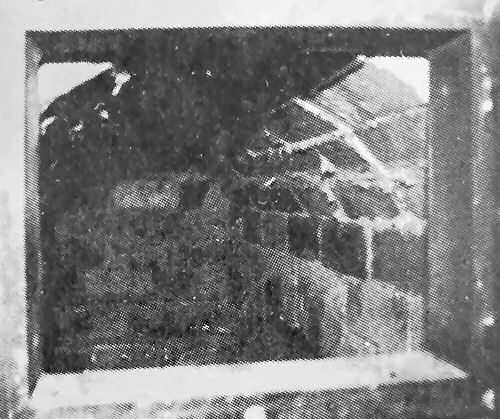
Bourry
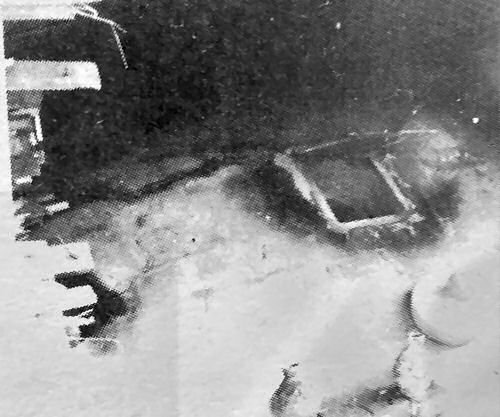
Side stoke
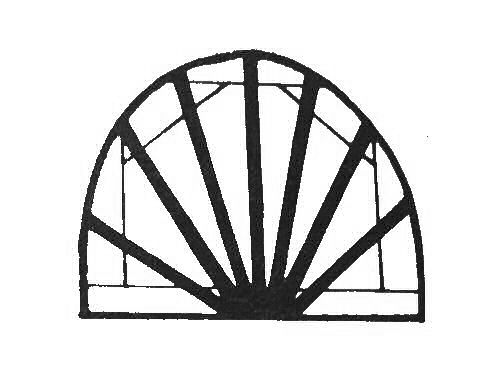
Kiln structure - Roofing batons
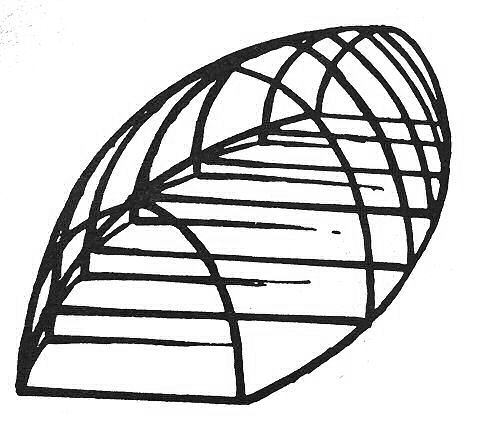
Kiln structure - Roofing batons
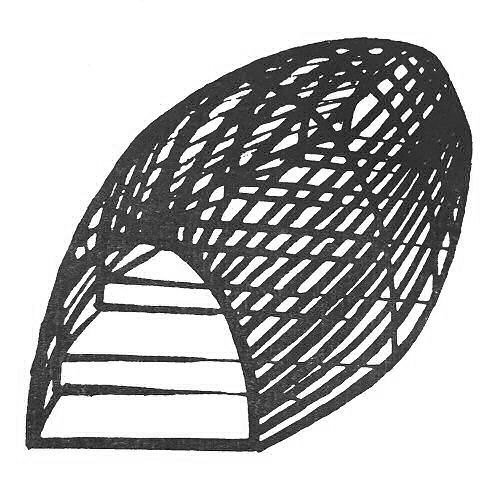
Kiln structure - Roofing batons
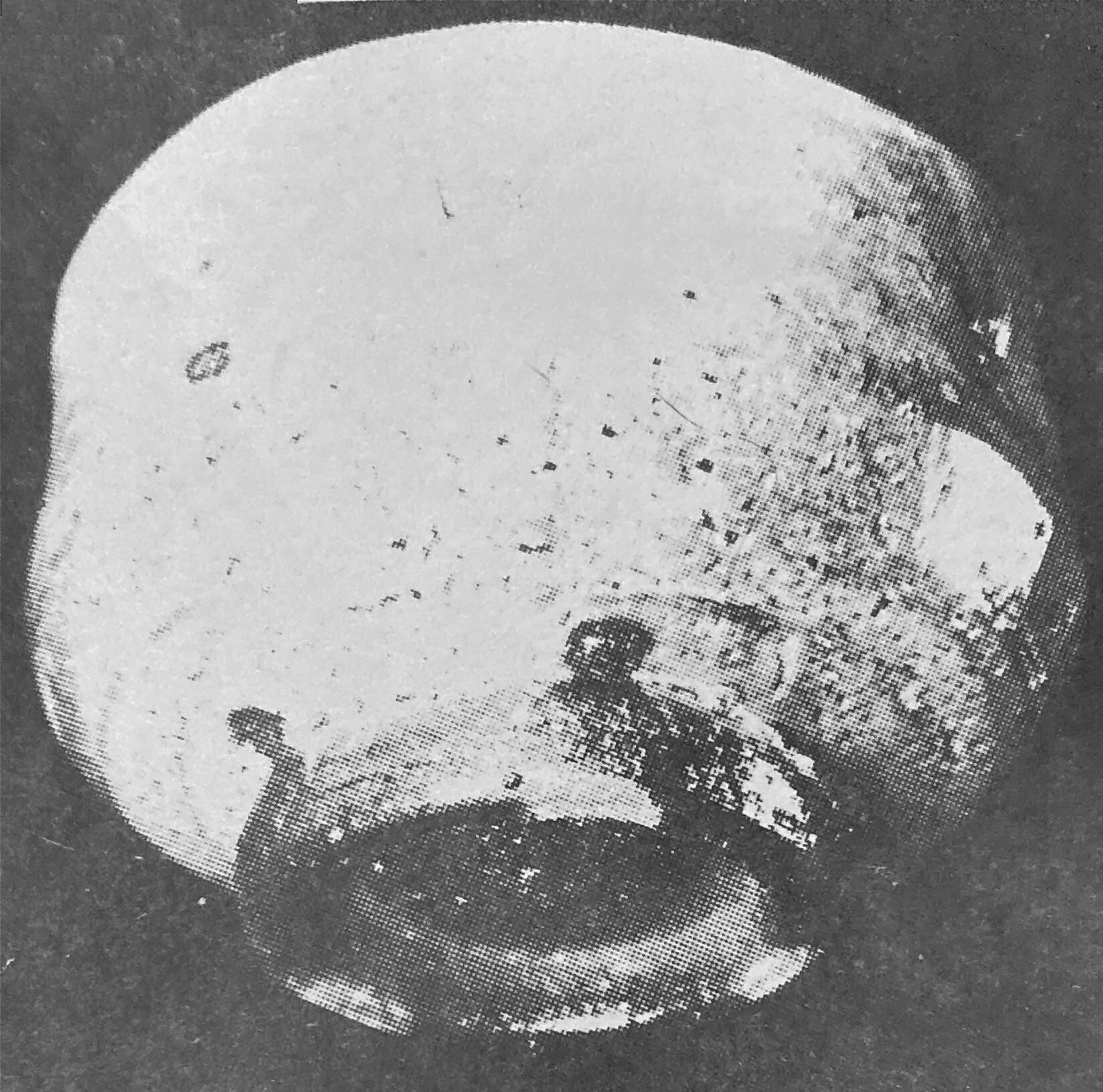
Shino bowl, 14cm
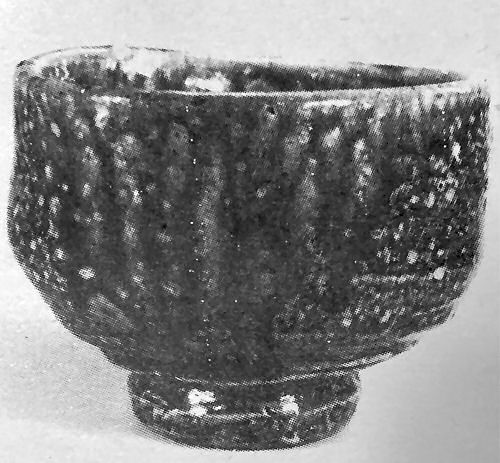
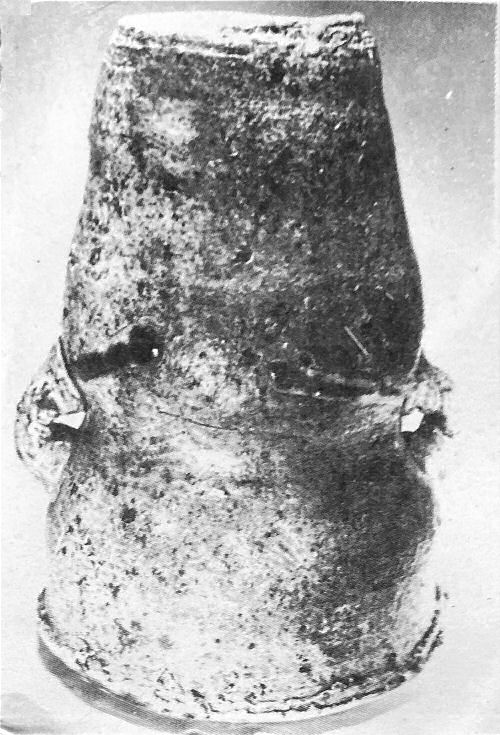
Vase 27cm
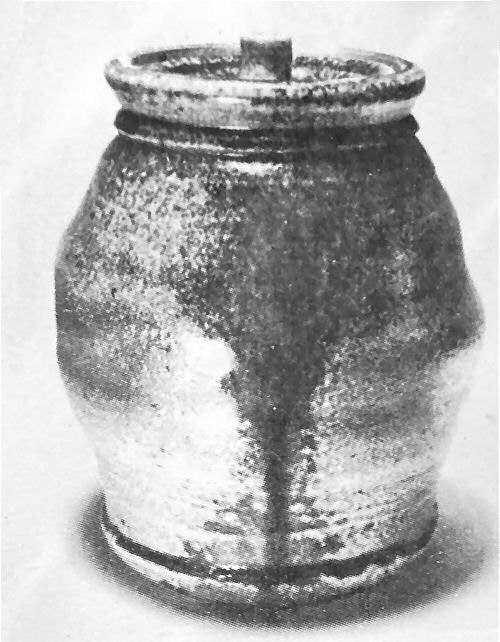
Lidded jar, 16cm
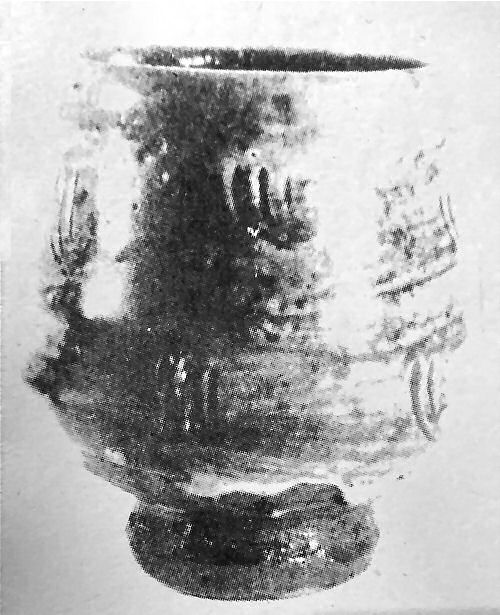
Brushed slip tea bowl, 11cm
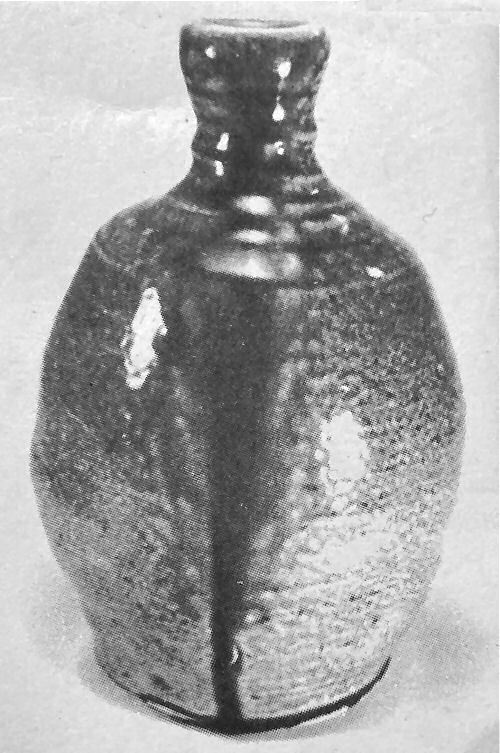
Bottle, 20cm
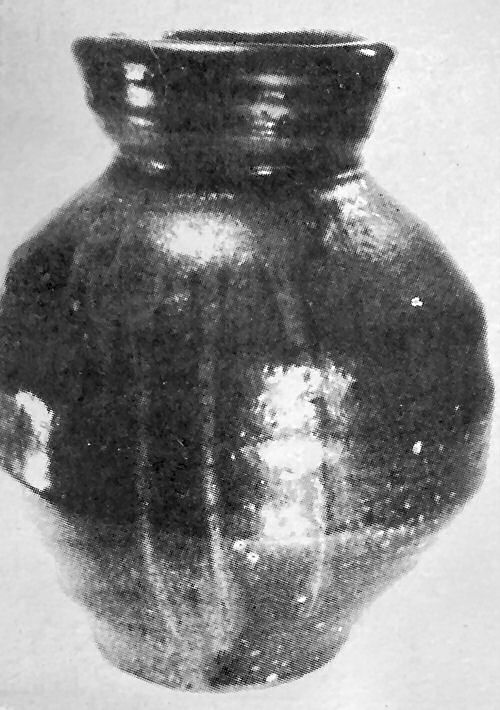
Vase, 23cm
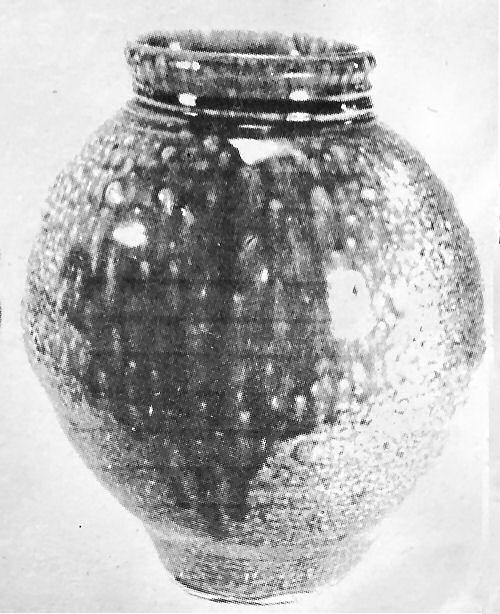
Vase, 26cm
